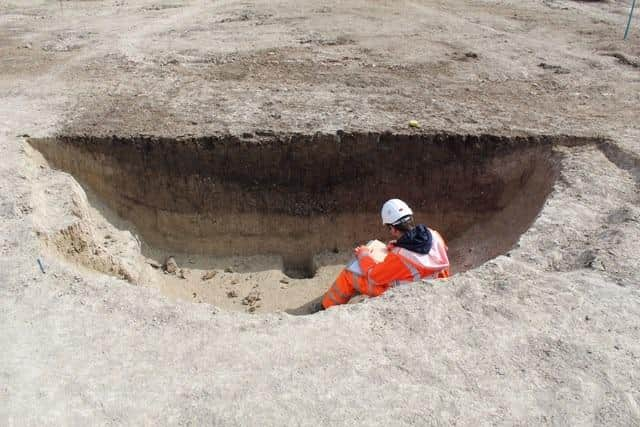Nationally significant pits found near Houghton Regis give clues about prehistoric Britain
and live on Freeview channel 276
Archaeologists have discovered 25 ‘nationally significant’ prehistoric sites near Houghton Regis.
The large pits were unearthed in Linmere and date back to the Mesolithic Period – between 12,000 and 6,000 years ago. And archaeologists believe there may be more pits still to be found.
Advertisement
Advertisement
The site was excavated first by Albion Archaeology in 2019 and by the Museum of London Archaeology (MOLA) in 2021 – but recent radiocarbon dating has revealed they are between 7,700 to 8,500 years old.


This date makes the site incredibly significant because there are very few Mesolithic sites in the UK that are this substantial.
Professor Joshua Pollard, an expert from Southampton University, said: “The Linmere Mesolithic pits are a very exciting discovery. While we know of other large and enigmatic pits dug by hunter-gatherers from elsewhere in Britain, including at Stonehenge, the Linmere pits are striking because of their number and the wide area they cover.”
The pits were all round with very steep sides, measuring up to five metres wide and nearly metres deep, and were laid out in multiple straight lines, near to where water streams were.
Advertisement
Advertisement
Archaeologists found the remains of wild species, like aurochs, marten, deer and boar. Aurochs were a wild species of cattle, and there was evidence on the bones that people were eating them. By radiocarbon dating these bones, the pits were revealed to be 8,000 years ago.


There are several ideas about what these pits were used for, from being used in hunting to storing food. But, the shape and size of these pits make these theories unlikely. Others believe that given the effort needed to make them, their alignments and their location next to water streams, they could have some spiritual or special significance. Archaeologists are carefully studying whether the pits are aligned on any major celestial events- like the solstice.
Yvonne Wolframm-Murray, project officer at MOLA, said: “It’s been amazing for the whole team to work on such a significant Mesolithic site. It really shows how important radiocarbon dating is alongside field work, as without it we wouldn’t have realised the significance of our discovery.”
Archaeologists continue with their radiocarbon dating more animal bones and analysing environmental samples to learn more about the ancient landscape.
